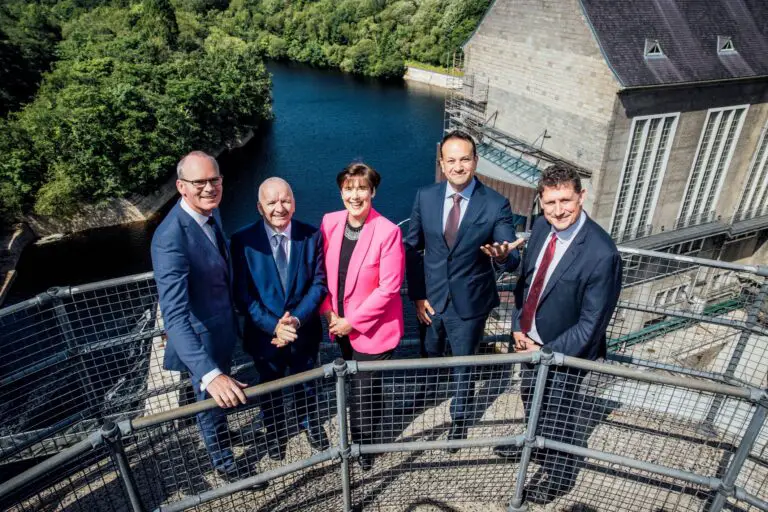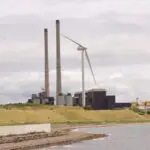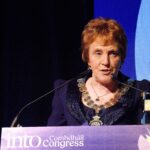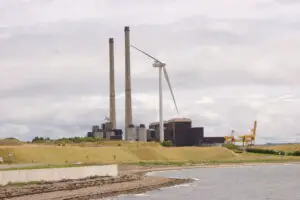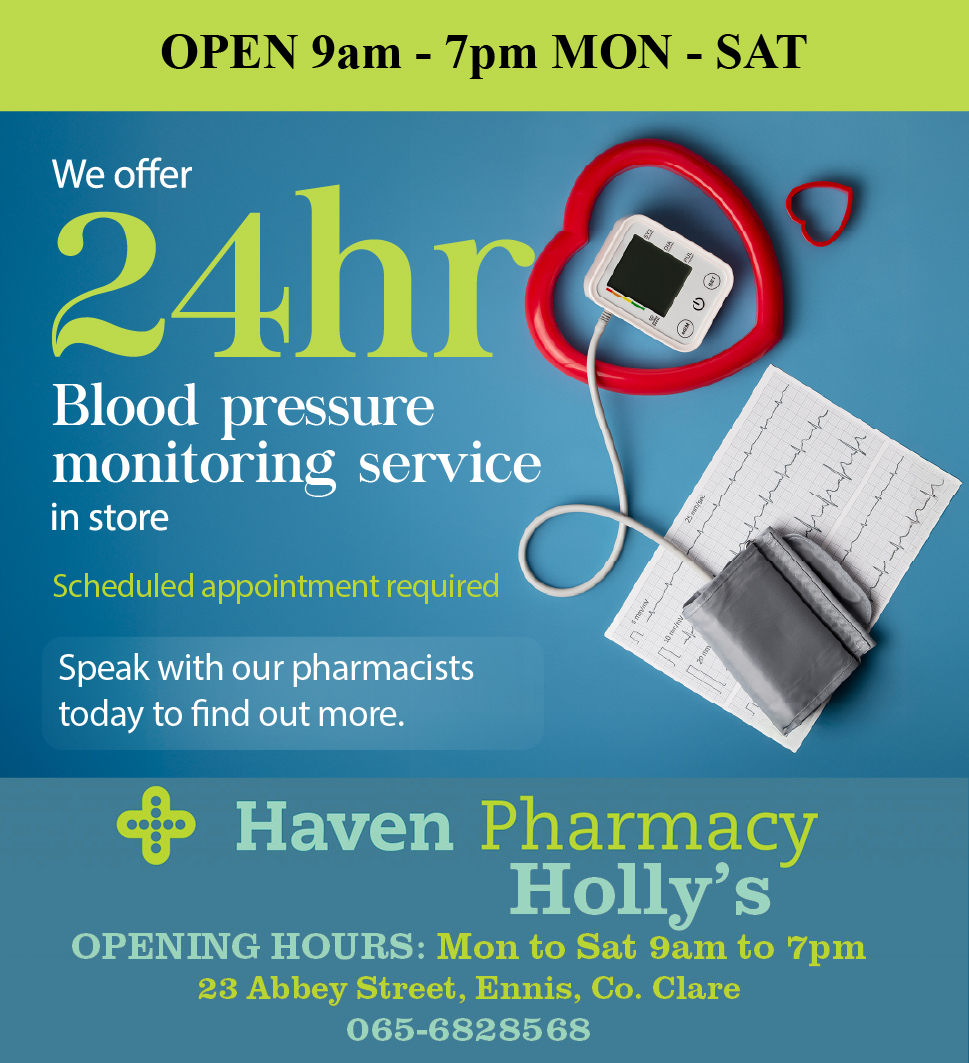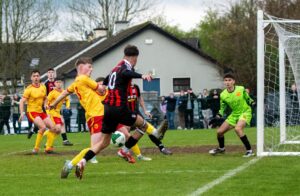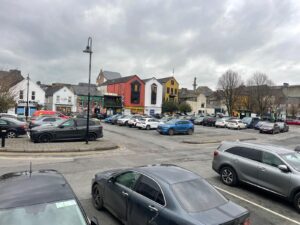*Photograph: Brian Arthur.
UP TO 50,000 ‘green jobs’ over the next thirty years are among the targets of the Shannon Estuary Economic Taskforce report.
In terms of ‘green jobs’ alone, the report targets the creation of 10,000 jobs by 2035 and 50,000 by 2050 along with having 2GW of green energy capacity in development by 2030, and up to 30GW installed by 2050. The investment value of the entire viable wind resource off the Atlantic seaboard is estimated at up to €120billion.
Launched in Ardnacrusha Power Station on Saturday morning, the 200 page report is the output from an estimated 5,000 hours of commitment by the voluntary Taskforce appointed by Government fifteen months ago to make recommendations on the economic development potential of the Shannon Estuary region.
Ardnacrusha’s setting for the launch was in recognition of the fact that it almost a hundred years ago unveiled plans to deliver a global renewable energy revolution as it became the world’s most cutting edge hydroelectric station, transforming a fledgling state as it electrified Ireland for the first time and, in tandem, saw the roll-out of the world’s first national grid.
Among the eleven person taskforce were CEO of Shannon Airport Group, Mary Considine, Ennis based Managing Director of SDC Business Consulting Ltd, Siobhan Dolan Clancy, Seán Hegarty, Dispatchable Generation, Storage & Regeneration Manager with ESB while Chief Executive of Clare County Council, Pat Dowling was one of four rotating representatives.
Based on the unique natural assets of almost unrivalled deep-water, proximity to one of the world’s largest offshore wind resources with an estimated 70GW generation capacity ten times our current national requirement and available development landbanks for offshore wind supply-chain, green fuels generation and large scale FDI and indigenous industries, the estuary can, the Taskforce found, become the staging post for the ‘Atlantic Green Digital Corridor’.
This, its Chairman Barry O’Sullivan stated, would be the world’s leading green powered digital hub, stretching from Donegal through to Cork and further inland and delivering unprecedented benefit to the State by way of not alone sustainably powering the nation but being the 21st century draw for FDI and indigenous business growth.
A key recommendation to Government in the report to enable this is the creation of a National Floating Offshore Wind Development Agency, a one- stop-shop – as recommended in the EU Green Deal – to ensure that the plan becomes a reality. The Taskforce also recommends that the region, described by Mr. O’Sullivan as “the green front door to Europe”, be given EU renewable energy ‘go-to area’ status.
Highlighting the significance of the report was the attendance of An Taoiseach Leo Varadkar (FG) to launch it together with Minister for Environment, Climate and Communications Eamon Ryan (GP), Minister for Enterprise Trade and Employment Simon Coveney (FG) and Minister for Education Norma Foley (FF) with TDs, Senators and Mayors from counties across the Shannon Estuary region.
Potential for the region to become a powerhouse for Ireland’s future economic development was noted by the Taoiseach. He stated, “what we want to do here in the Shannon Estuary region is to make this the green digital powerhouse for the country”. The plans will take decades to deliver, he acknowledged. “I see this as an Ireland project and an all-of-Ireland project. We have a single electricity market north and south, and we’re keen to approach this opportunity, this green energy revolution, as something that will involve the whole country, north and south.
Taskforce Chairman O’Sullivan urged political and business stakeholders to play their part in leading the Shannon Scheme 2.0. “The scale in terms of time is infinite because the wind will be around forever. And we’ve enough power out there for about 70 million people. We’ll want to export some of that and play our part in the decarbonisation of Europe. But also we want to attract new industries here and develop our own industries to take that power, create value-add and take the economy to a new level”.
Capacity to rebalance the national economy exists within the Shannon Estuary, Minister Ryan outlined. “This is bringing power to the people, but it’s also bringing industry to where the power is. The big story here is a move-west, northwest, southwest, rebalancing our country. There’s so much development in the east that’s good for everyone but if it’s all in the East the country is imbalanced. Using this power in the west to bring jobs to create energy but also to balance our country, real strong growth right along the west coast, north west, south west, I think that’s the big story here. It’s a balancing of the country, the economic development heading west, I think that’s a good news story for everyone.”
He continued, “If 100 plus years ago we could build this damn to power the country, spending a quarter of our total wealth and income, yes, we can achieve that today. We’re inspired by what was done in the past and we repeat it today at scale. We’re good at renewable power. There’s a revolution taking place in the world and we happen to have some of the best resources, wind and solar. And yes, we will develop this for sure. This will be the warmest week in history. This is a wake-up call. We have to act now and act fast. Switching to renewables is one of the things that gives us hope. So today is the answer to the to the fear. We have ways ahead”.
Not alone is it an industrial strategy linked to offshore wind but it is an energy and climate strategy, Minister Coveney remarked. “It’s about reducing emissions and it’s about responding to the climate emergency. But it’s also it’s also about reshaping the Irish economy very fundamentally. And the reason why we’re actually launching this report at Ardnacrusha was that’s exactly what happened 100 years ago. We’re talking about actually reshaping the Irish economy from east to west, counterbalancing the dominance of the East Coast. And this in many ways is an international project”.
Minister Coveney added, “This I think will be a day that people will look back on in five years’ time, in ten years’ time, in 20 years’ time, and say a vision was outlined on that day that actually reshaped Ireland’s economy and our Irish society in a way that was a catalyst for extraordinary investment in the west of Ireland”.

